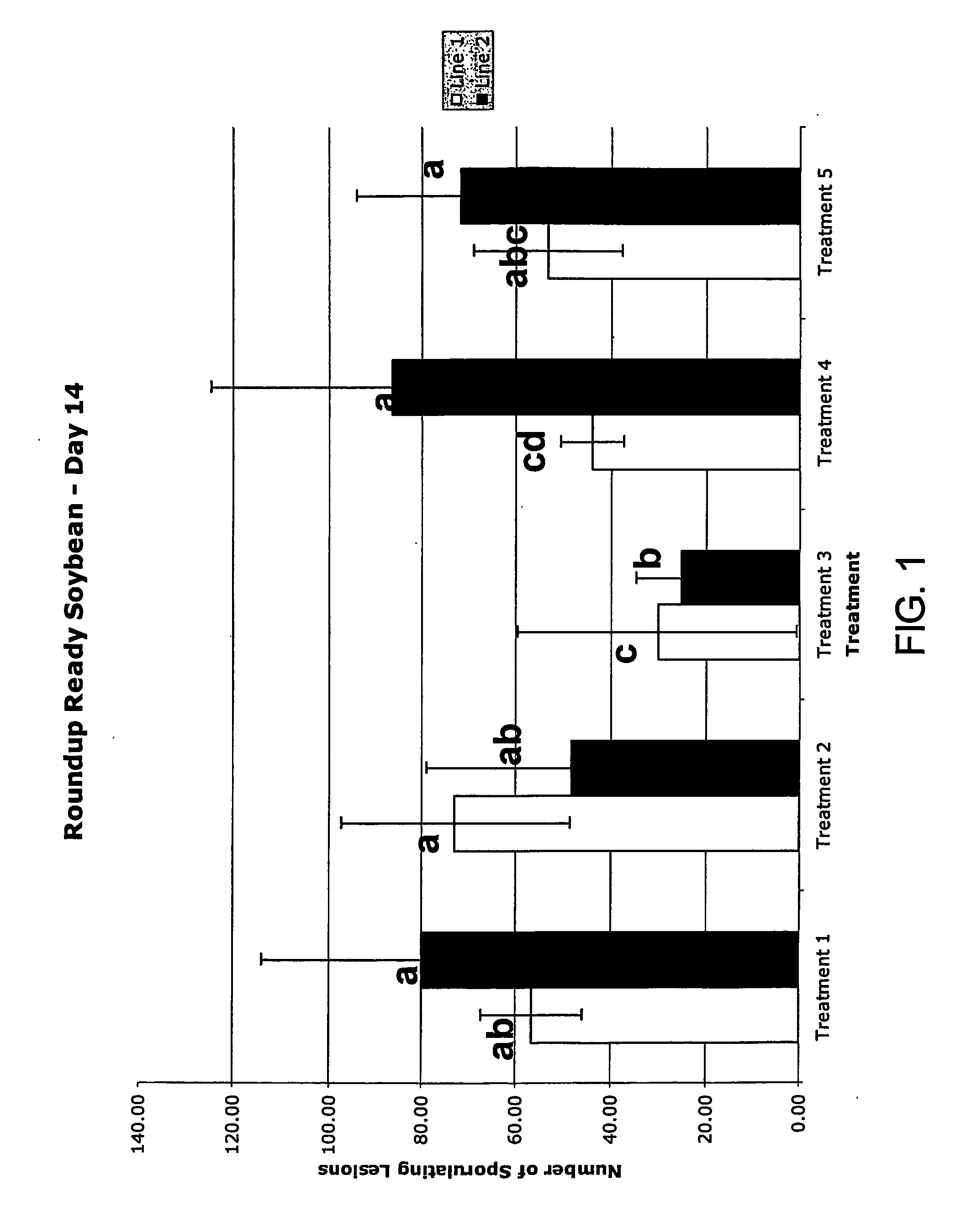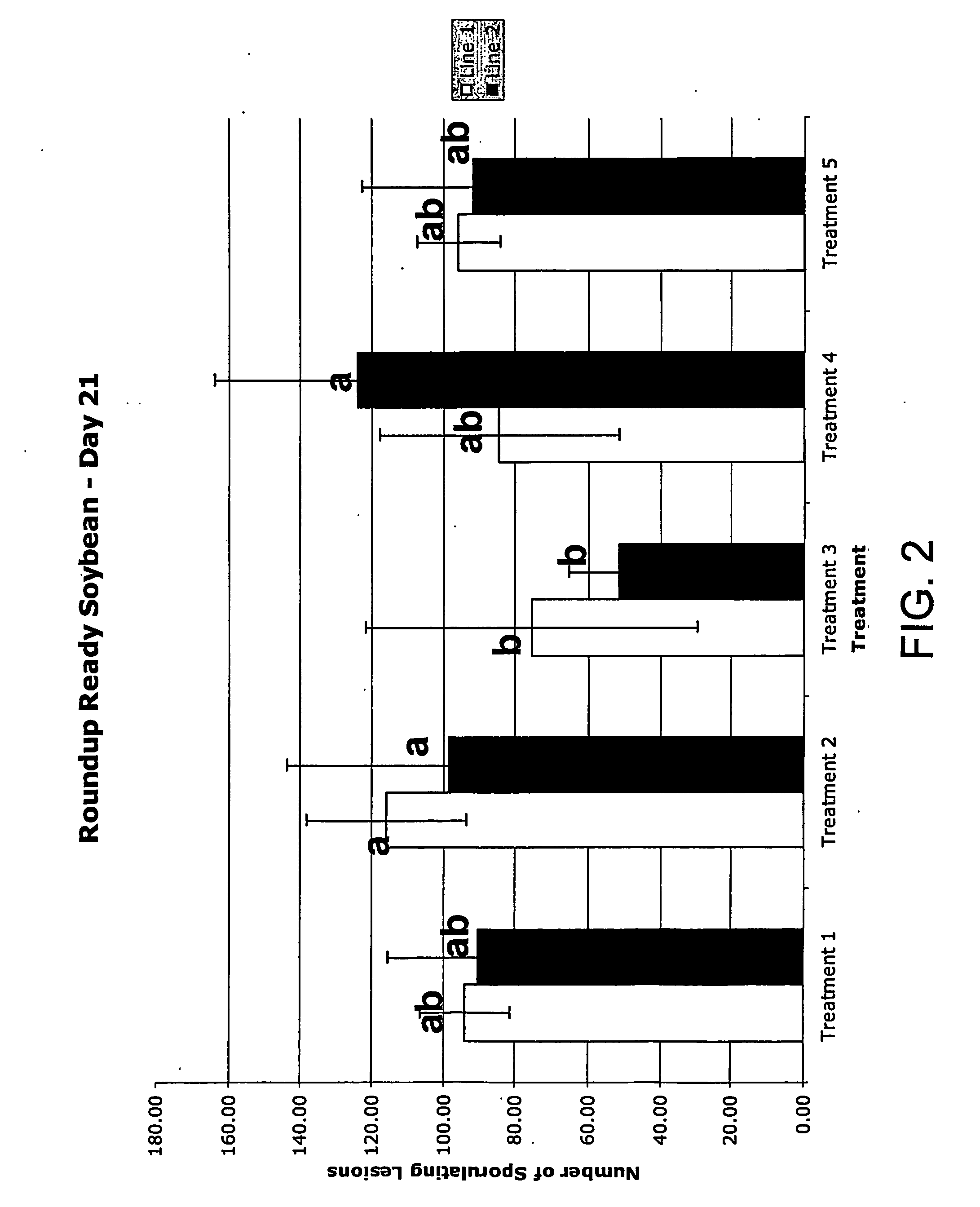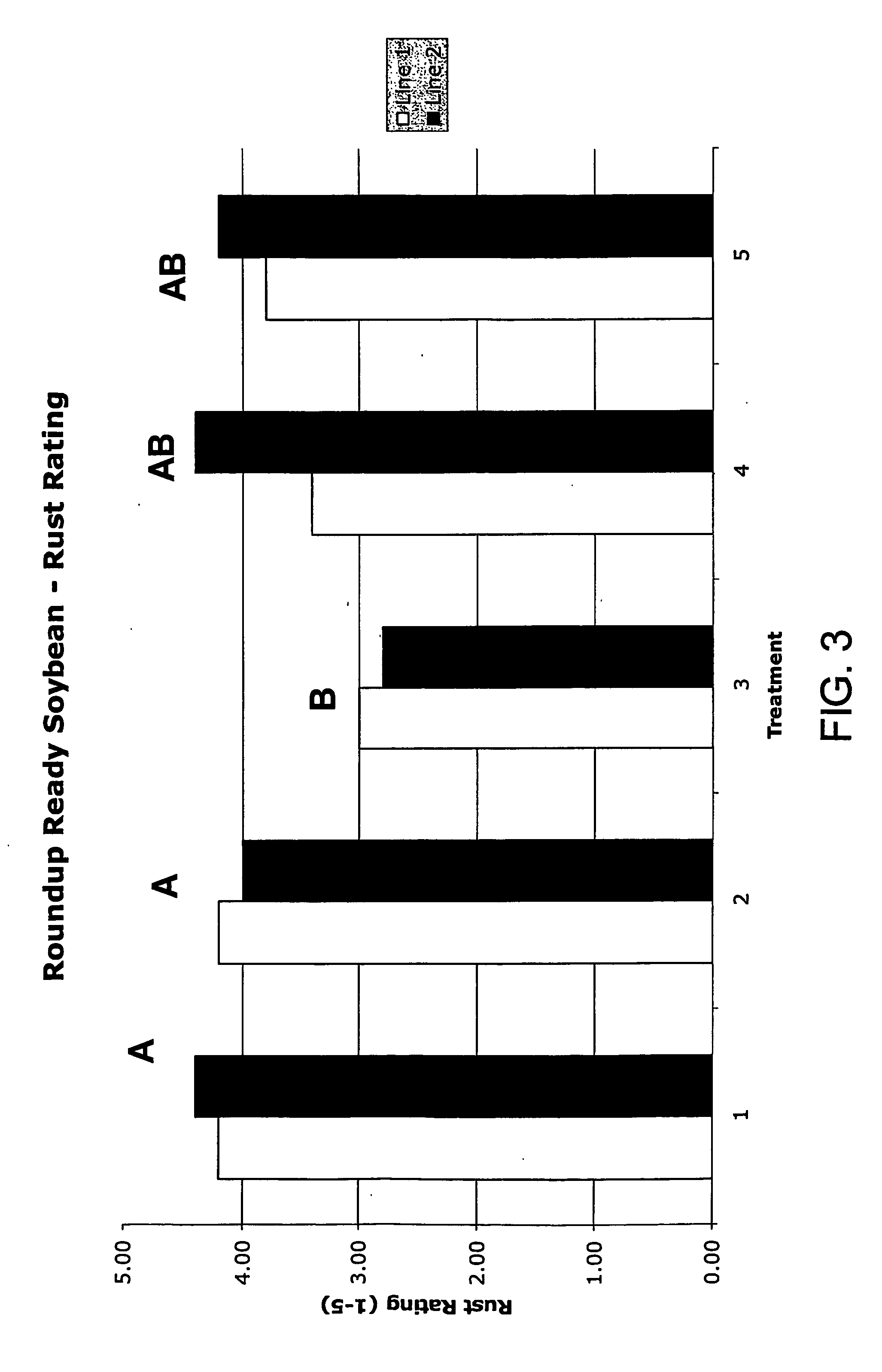Suppression of foliar and soilborne pathogens
a technology of foliar and soil, applied in the field of seed borne, soil borne or foliar pathogens, can solve the problems of increasing crop yield, and achieve the effects of increasing crop resistance to fungal pathogens, reducing the impact of root diseases, and increasing crop yield
- Summary
- Abstract
- Description
- Claims
- Application Information
AI Technical Summary
Benefits of technology
Problems solved by technology
Method used
Image
Examples
example 1
[0041] This example describes the response of glyphosate resistant and glyphosate sensitive spring wheat to inoculation with soil pathogens as judged by wheat yield. Inoculation simulates the green-bridge effect of dying weeds and volunteer in a standing wheat crop. The soil pathogens assessed were: Rhizoctonia solani isolate AG-8 and Gaeumannomyces graminis var. tritici. These pathogenic strains are prevalent in the Pacific Northwest and were isolated from the region. They have been maintained by the Department of Plant Pathology and USDA researchers at Washington State University.
[0042] Near isogenic lines (glyphosate resistant and glyphosate sensitive) of Westbred 926 and Bobwhite were seeded using a no-till drill at three different sites (Lind, Davenport and Pullman, Wash.).
[0043] To introduce the root pathogens into the wheat seed for distribution into the field, oat seeds, autoclaved and sterilized, were inoculated for each soilborne pathogen using isolated pathogen cultures...
example 2
[0045] This example describes the effect of herbicide treatment on spring wheat, averaged over all disease treatments, planted as described in Example 1. The appropriate herbicide was applied to each trial once the plants reached the 4-5 leaf stage with a custom built hand-pulled sprayer outfitted with a boom with a length of 16 feet with spray shields on the side to minimize drift. In this manner, an entire plot was treated at once with the appropriate herbicide rate. Entries that were resistant to glyphosate were treated with ROUNDUP® brand herbicide (0.63 kg / ha), available from Monsanto, St. Louis, Mo. Herbicide sensitive and resistant entries were treated with a common broadleaf herbicide treatment (Buctril / Harmony) or a no-spray control. Introduced green-bridge barley and any other weeds were manually removed 7-10 days after spray treatment to simulate the time required for ROUNDUP to take effect and maintained weed-free conditions to provide an accurate comparison to commercia...
example 3
[0047] This example describes the assessment of the disease response of non-inoculated glyphosate resistant spring wheat as described in Example 1 and treated with glyphosate in comparison to inoculated near isogenic lines of glyphosate sensitive spring wheat. The results, recorded in Table 3, demonstrate increased yield accompanying glyphosate treatment of non-inoculated wheat.
TABLE 3Yields of non-inoculated wheat demonstrating increasedyield of glyphosate resistant wheat due to glyphosatetreatment, 2002.HerbicideYieldInoculationResistanceHerbicideLocation(bu / acre)noneNoneNoneLind13.5noneNoneBuctril / HarmonyLind12.8noneglyphosate res.glyphosateLind14.2noneNoneNoneDavenport24.6noneNoneBuctril / HarmonyDavenport23.6noneglyphosate res.glyphosateDavenport29.1noneNoneNonePullman47.0noneNoneBuctril / HarmonyPullman45.0noneglyphosate res.glyphosatePullman55.6
Thus treatment of glyphosate-resistant wheat lines with glyphosate increases yield, even in the absence of additional pathogen inoculu...
PUM
| Property | Measurement | Unit |
|---|---|---|
| length | aaaaa | aaaaa |
| time | aaaaa | aaaaa |
| density | aaaaa | aaaaa |
Abstract
Description
Claims
Application Information
 Login to View More
Login to View More - R&D
- Intellectual Property
- Life Sciences
- Materials
- Tech Scout
- Unparalleled Data Quality
- Higher Quality Content
- 60% Fewer Hallucinations
Browse by: Latest US Patents, China's latest patents, Technical Efficacy Thesaurus, Application Domain, Technology Topic, Popular Technical Reports.
© 2025 PatSnap. All rights reserved.Legal|Privacy policy|Modern Slavery Act Transparency Statement|Sitemap|About US| Contact US: help@patsnap.com



